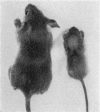Abstract
The distribution of donor cells in the lymphoid organs of mice suffering from acute runt disease was investigated by means of the cytological marker (T6). In all the strain combinations studied relatively low proportions of donor cells were identified in the spleen and bone marrow. In the A→CBA-T6T6 and C57BL→CBA-T6T6 combinations high proportions of donor cells were found in the lymph nodes and thymus. Few donor cells at all lymphoid sites were identified in the CBA-T6T6→C57BL combination, though the recipients showed unquestionable clinico-pathological signs of runt disease.
Despite marked splenomegaly in 12-day-old runts, the mean total number of cells in the spleen was similar to that in normal mice and mice injected at birth with isologous cells. In the A→CBA-T6T6 and C57BL→CBA-T6T6 combinations donor cells significantly contributed to the total cellularity of the enlarged spleen, in contrast to the CBA-T6T6→C57BL combination in which the host's spleen consisted almost exclusively of host cells.
Grafting tests showed that runted mice can be either non-specifically or specifically tolerant which seemed to depend on the degree of lymphoid atrophy and the degree of chimerism. Some of the animals that eventually rejected skin grafts from spleen inoculum donors, continued to be chimeric for donor lymphoid cells.
A mechanism for runt disease could be mutual interaction between donor and host cell populations causing reduction of the host's lymphoid reserve and consequent appearance of clinical symptoms of disease.
Full text
PDF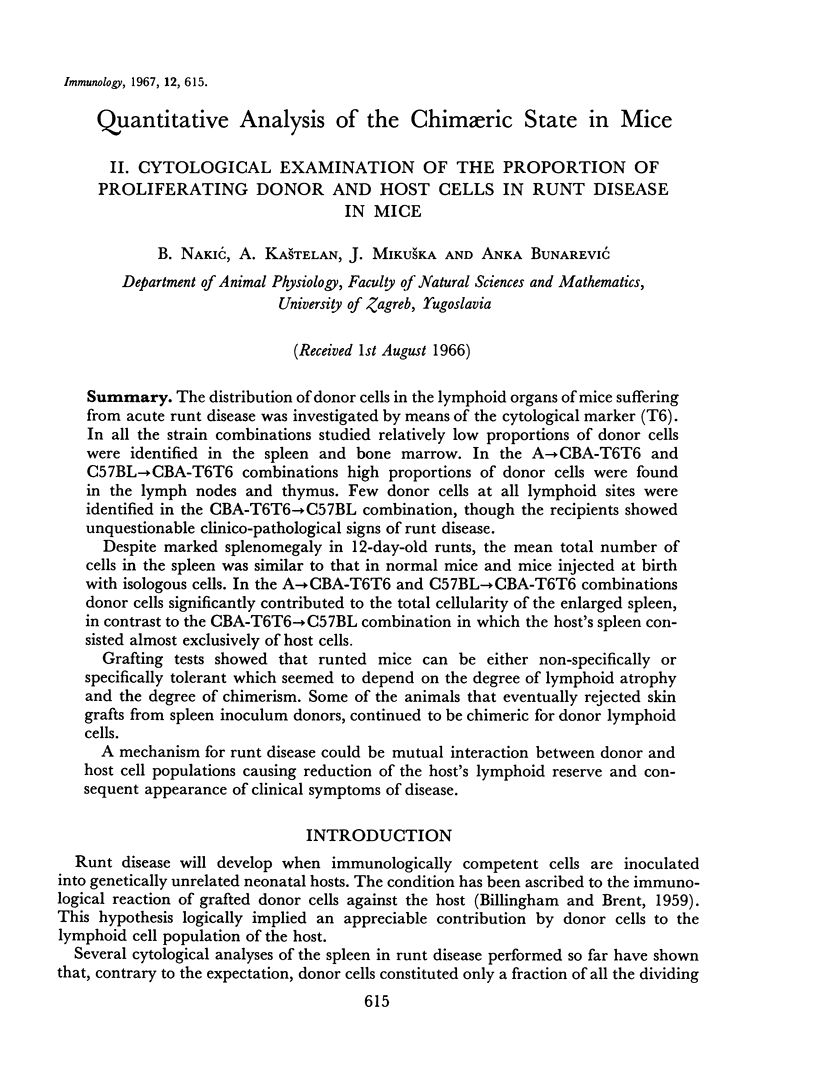
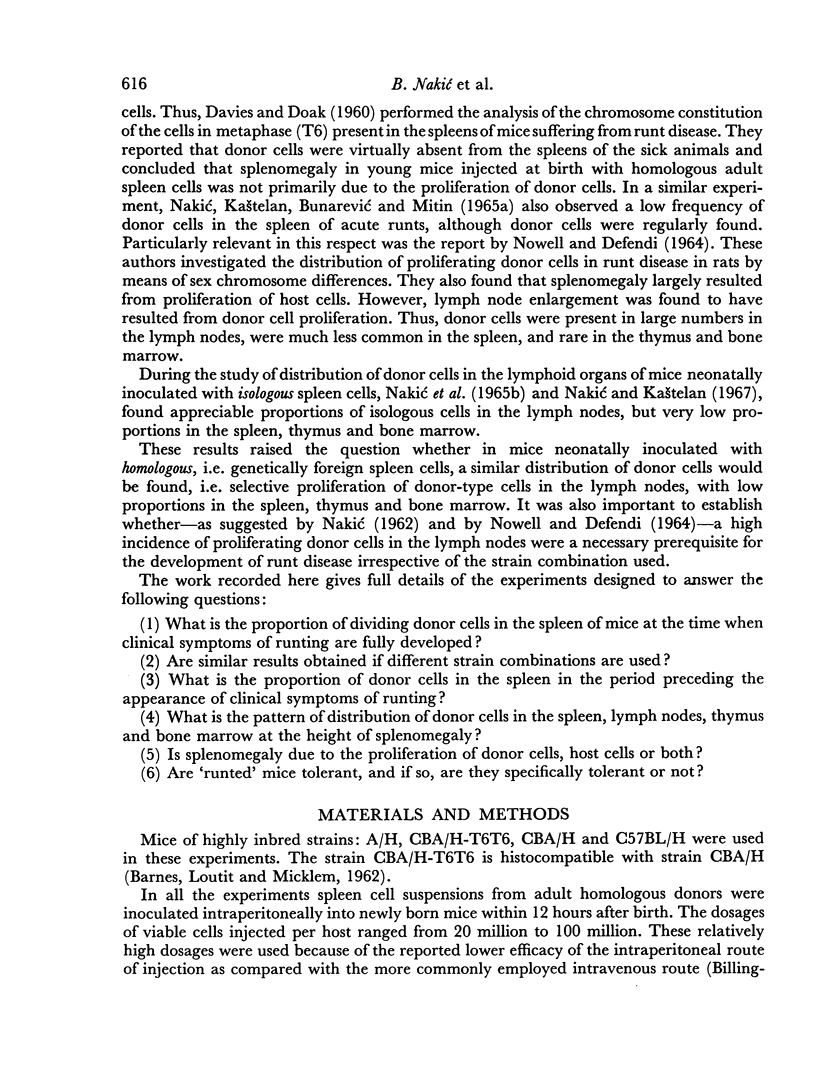
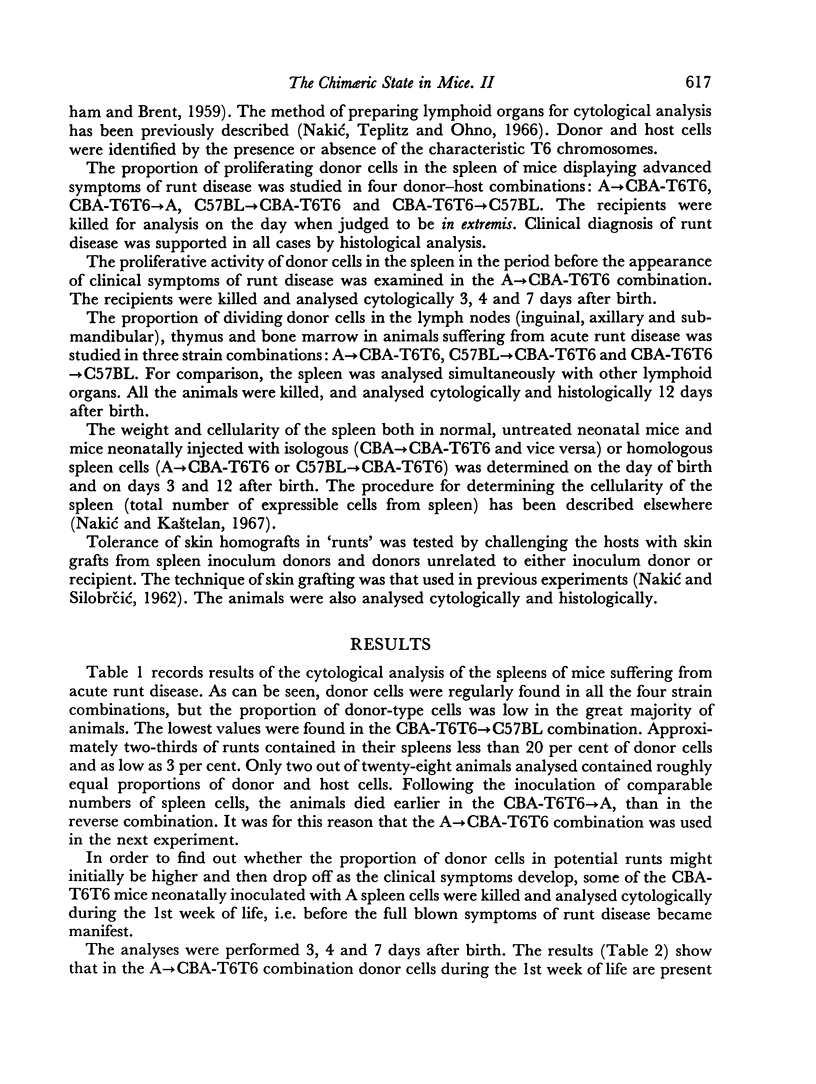
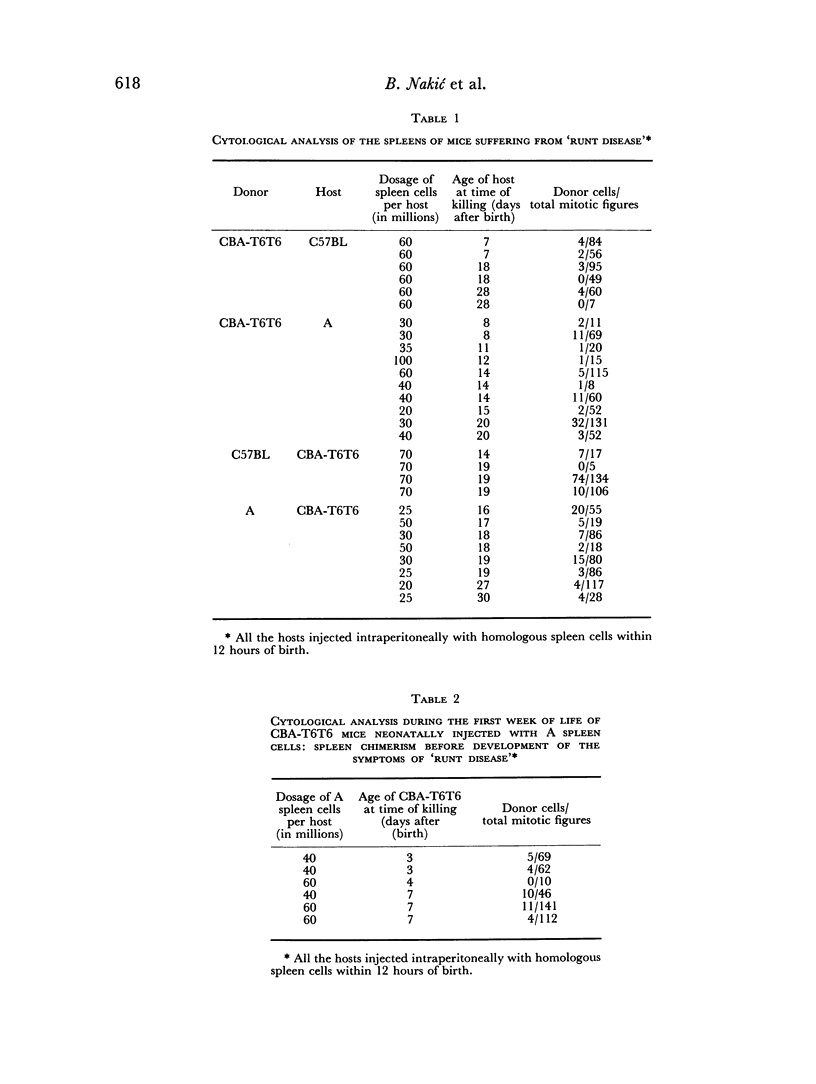
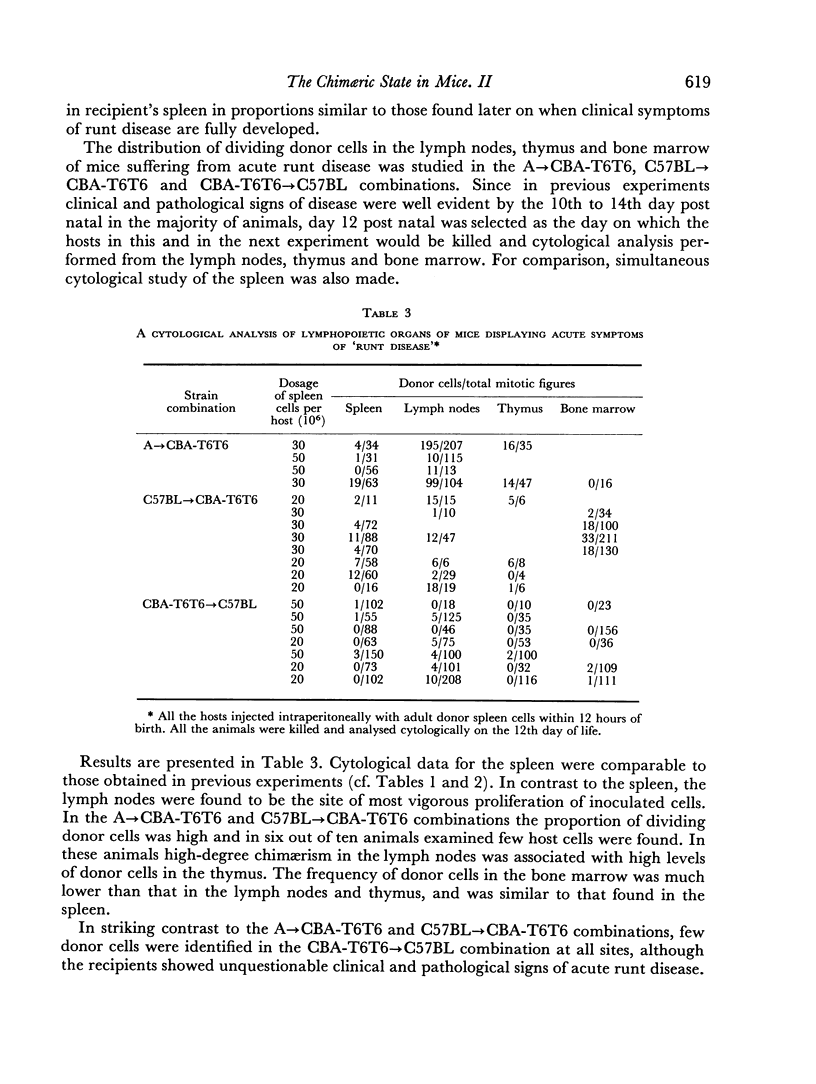
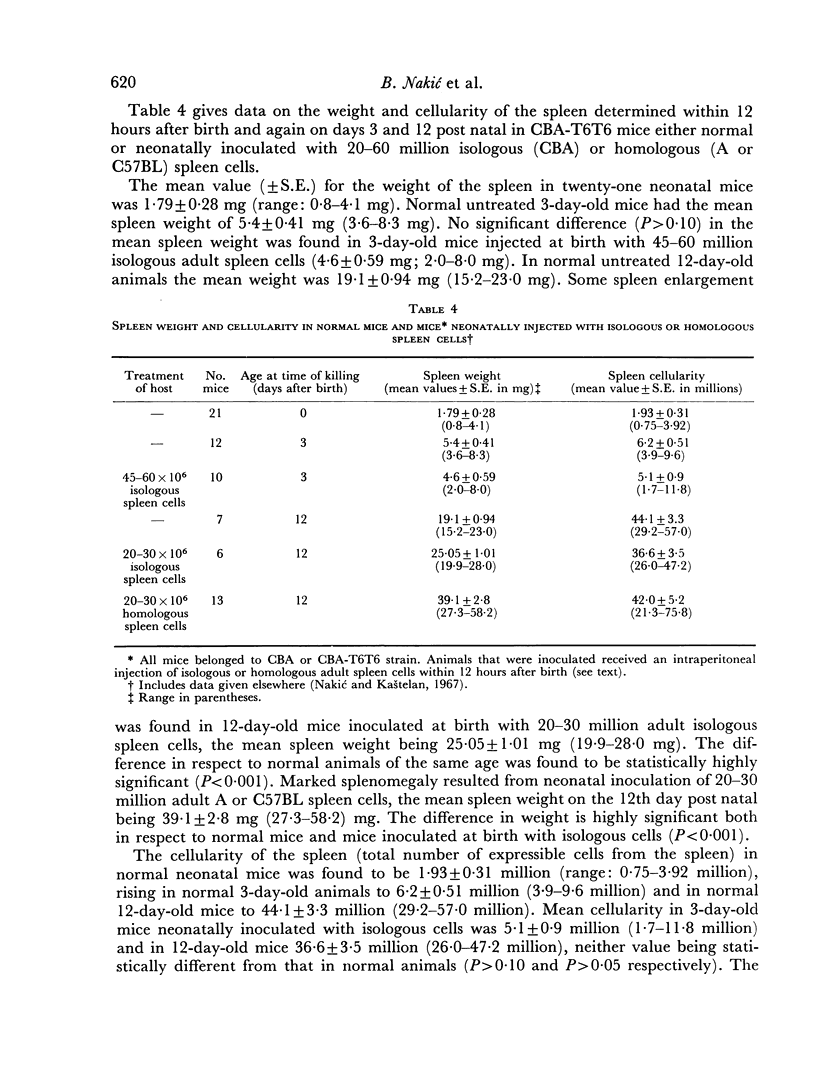
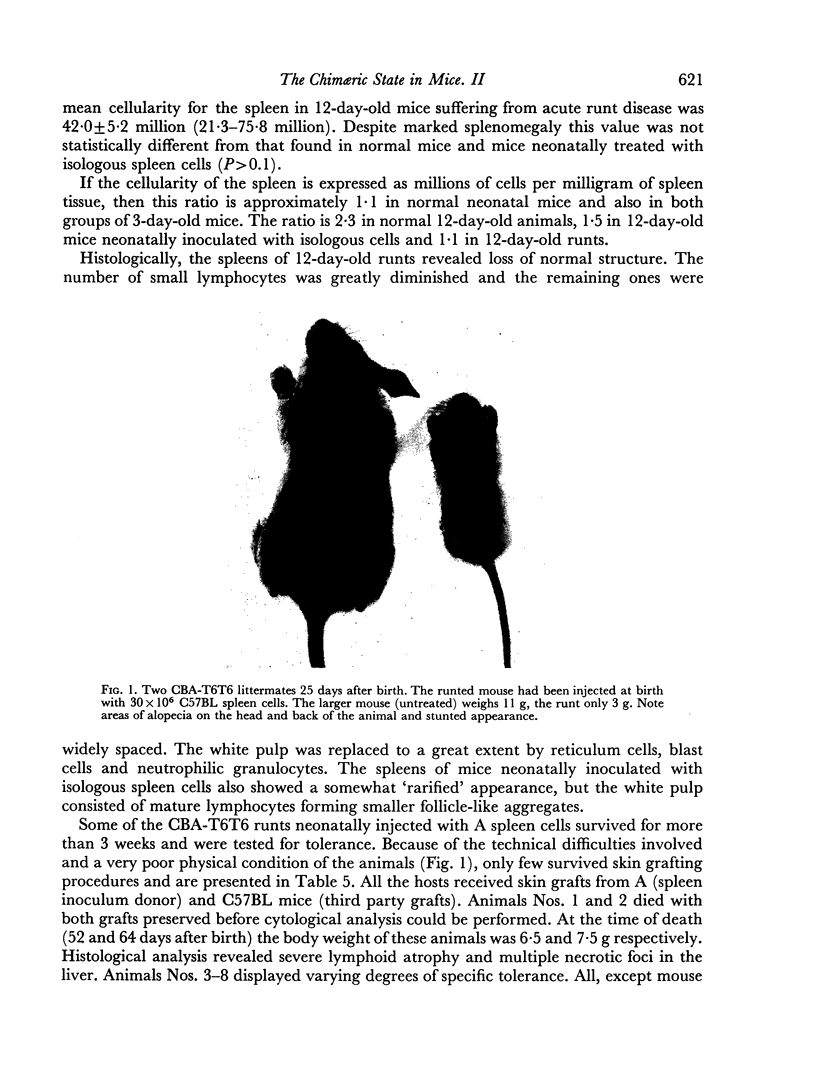
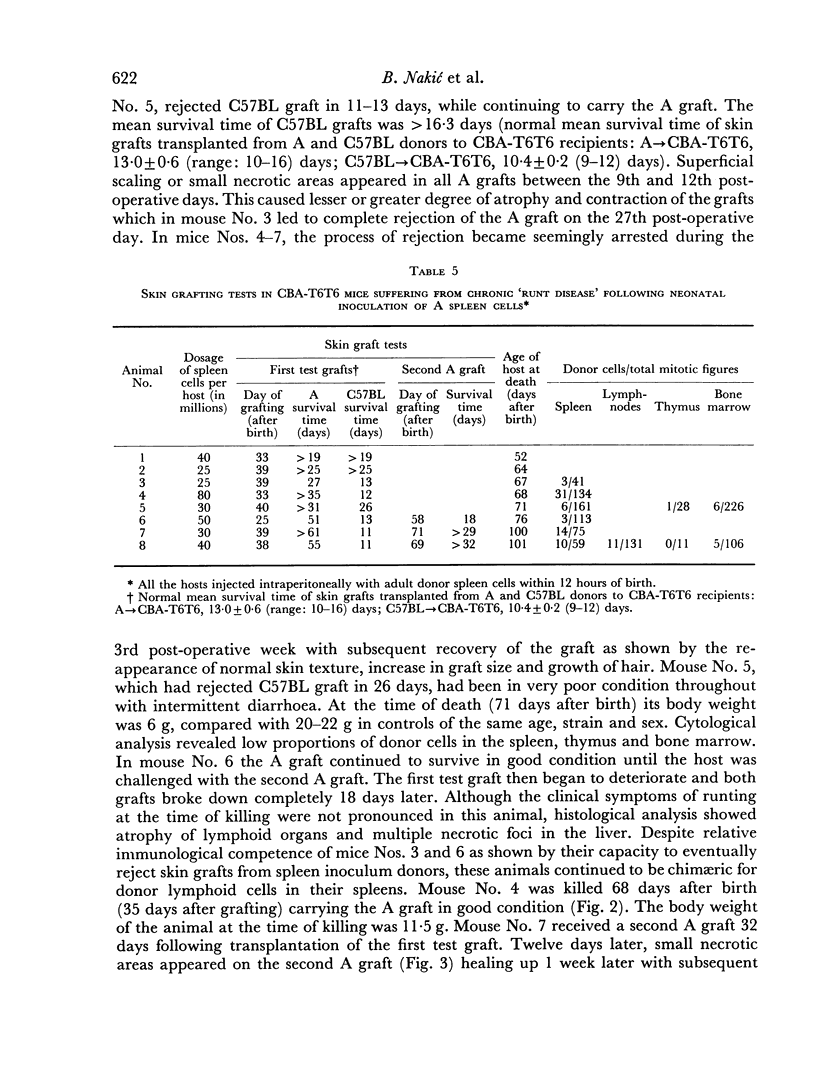
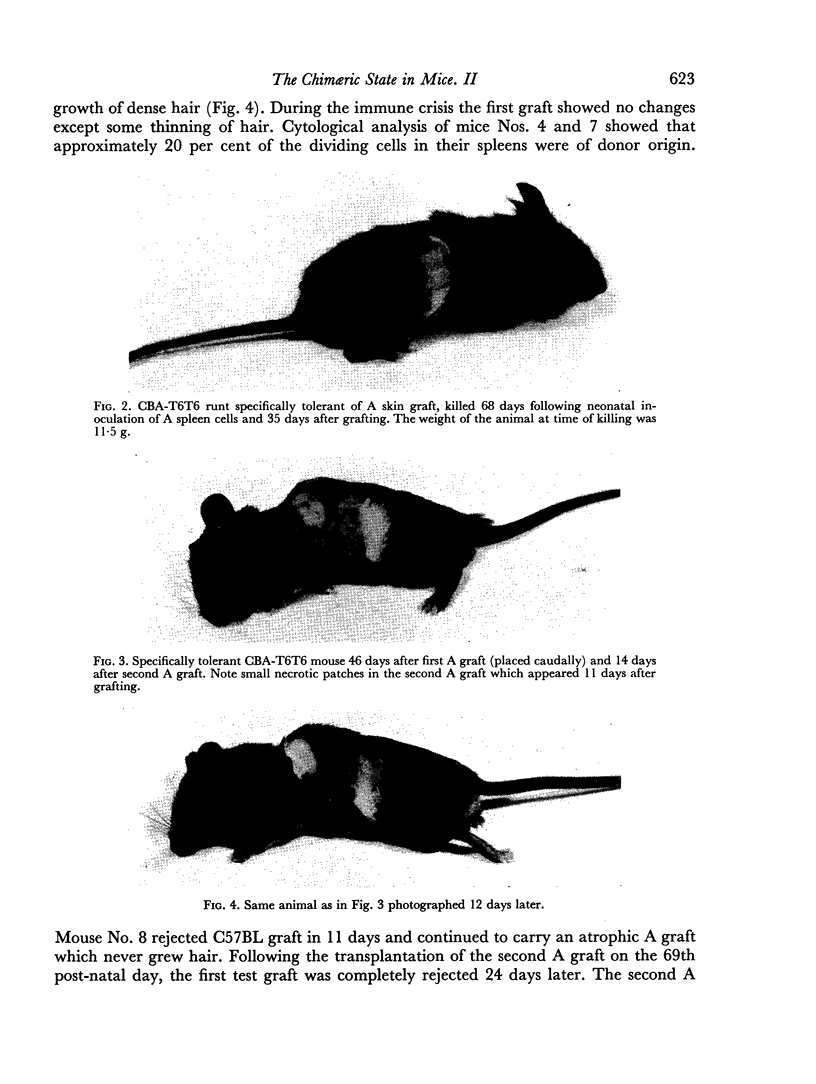

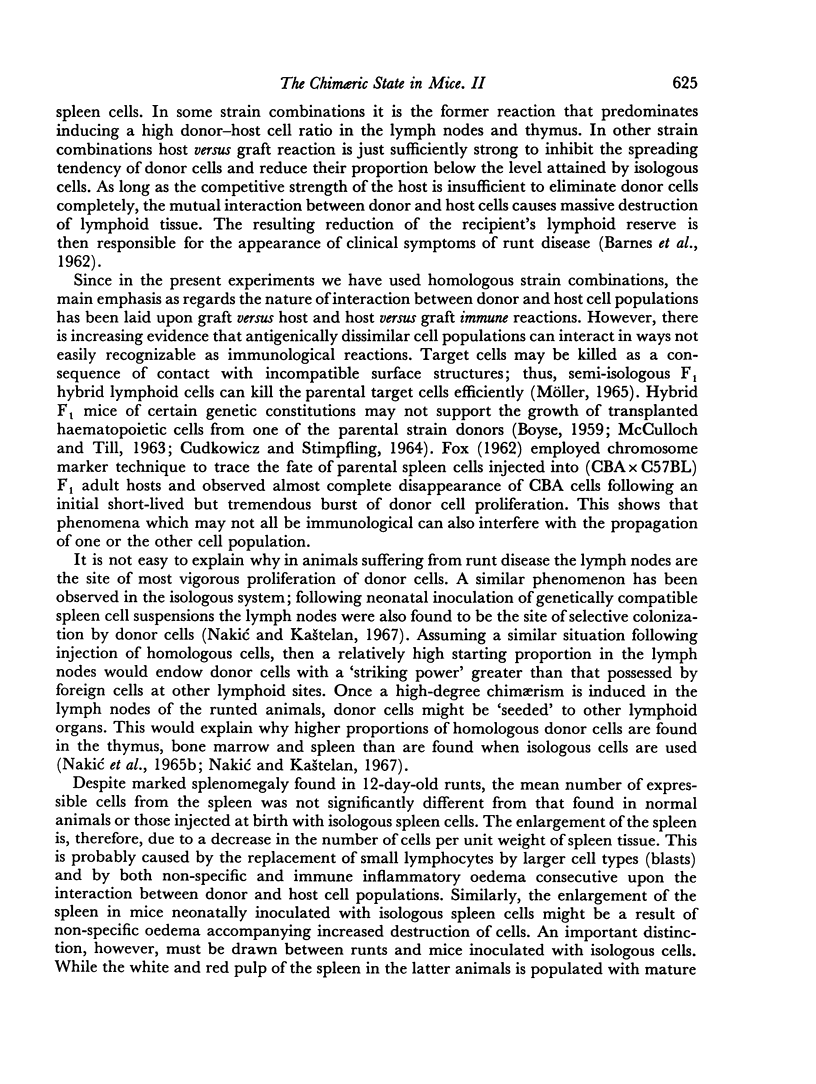
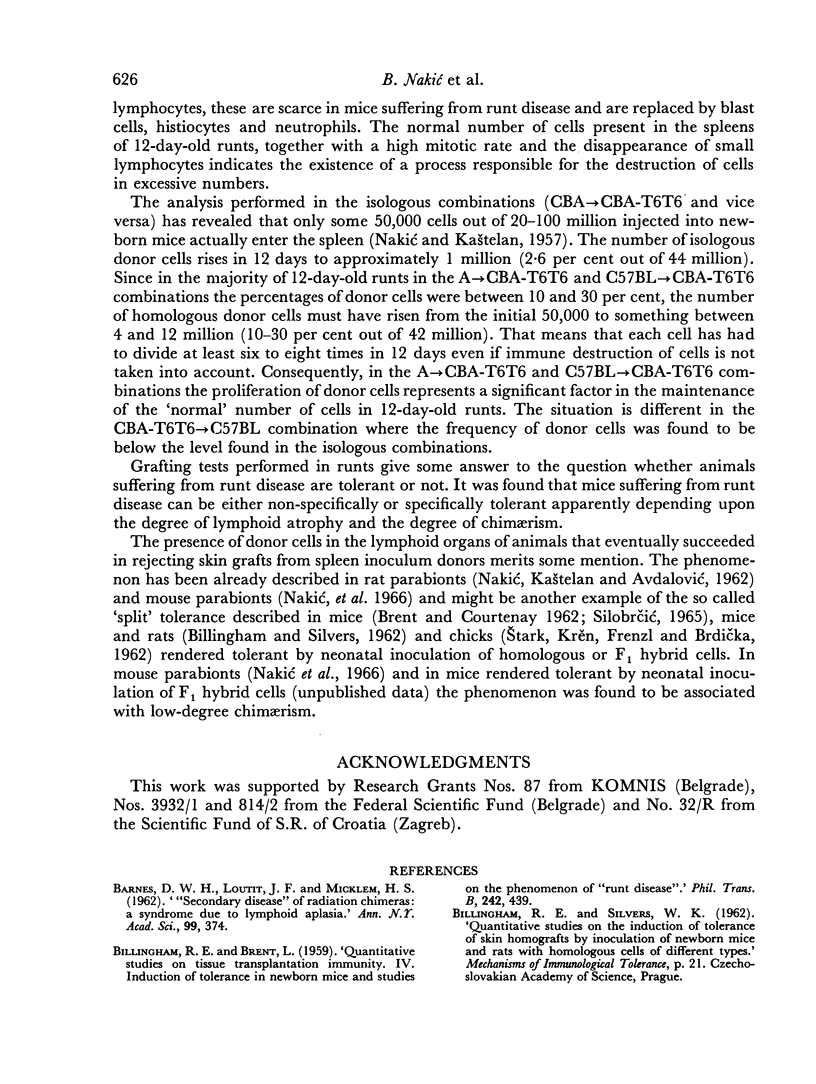
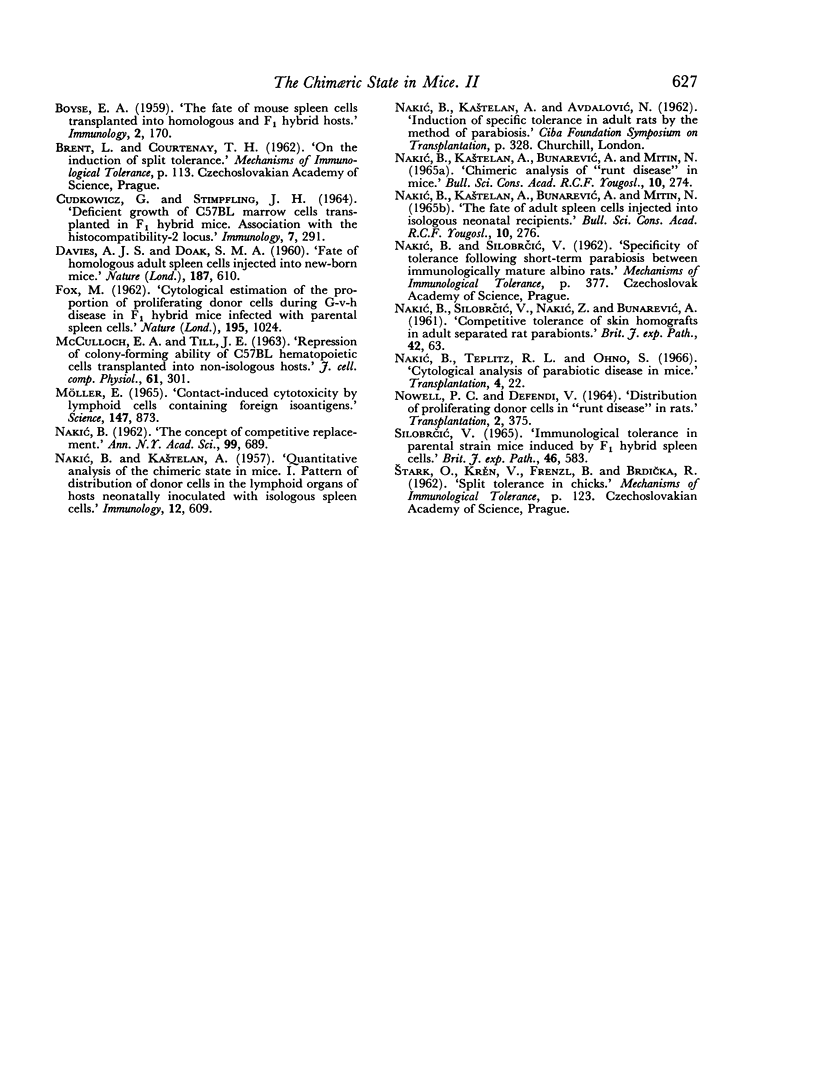
Images in this article
Selected References
These references are in PubMed. This may not be the complete list of references from this article.
- BARNES D. W., LOUTIT J. F., MICKLEM H. S. "Secondary disease" of radiation chimeras: a syndrome due to lymphoid aplasia. Ann N Y Acad Sci. 1962 Oct 24;99:374–385. doi: 10.1111/j.1749-6632.1962.tb45321.x. [DOI] [PubMed] [Google Scholar]
- BOYSE E. A. The fate of mouse spleen cells transplanted into homologous and F1 hybrid hosts. Immunology. 1959 Apr;2(2):170–181. [PMC free article] [PubMed] [Google Scholar]
- CUDKOWICZ G., STIMPFLING J. H. DEFICIENT GROWTH OF C57BL MARROW CELLS TRANSPLANTED IN F1 HYBRID MICE. ASSOCIATION WITH THE HISTOCOMPATIBILITY-2 LOCUS. Immunology. 1964 May;7:291–306. [PMC free article] [PubMed] [Google Scholar]
- DAVIES A. J., DOAK S. M. Fate of homologous adult spleen cells injected into new-born mice. Nature. 1960 Aug 13;187:610–611. doi: 10.1038/187610b0. [DOI] [PubMed] [Google Scholar]
- FOX M. Cytological estimation of the proportion of proliferating donor cells during graft-versus-host disease in F1 hybrid mice infected with parental spleen cells. Nature. 1962 Sep 8;195:1024–1025. doi: 10.1038/1951024a0. [DOI] [PubMed] [Google Scholar]
- MOELLER E. CONTACT-INDUCED CYTOTOXICITY BY LYMPHOID CELLS CONTAINING FOREIGN ISOANTIGENS. Science. 1965 Feb 19;147(3660):873–879. doi: 10.1126/science.147.3660.873. [DOI] [PubMed] [Google Scholar]
- NOWELL P. C., DEFENDI V. DISTRIBUTION OF PROLIFERATING DONOR CELLS IN RUNT DISEASE IN RATS. Transplantation. 1964 May;2:375–382. doi: 10.1097/00007890-196405000-00006. [DOI] [PubMed] [Google Scholar]



